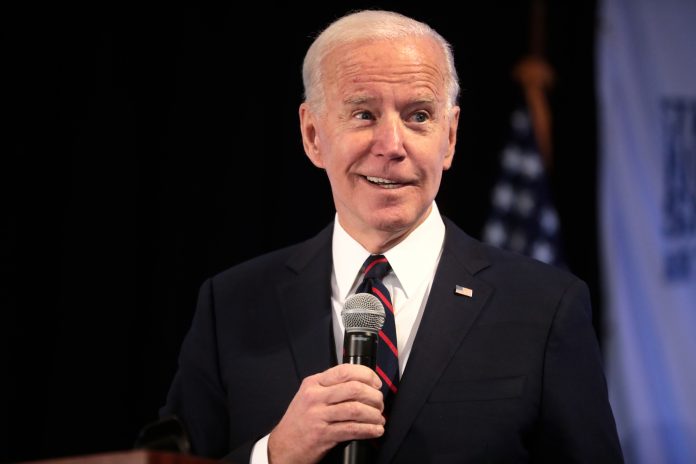In his executive order (EO) to promote competitiveness in the U.S. economy, President Joe Biden included health provisions that build on Trump-era reform initiatives to improve patient choice.
In his EO, Biden directs the Department of Health and Human Services (HHS) to act in four areas: 1) allowing hearing aids to be sold over the counter; 2) addressing hospital consolidation; 3) countering insurance market consolidation, and 4) keeping prescription drugs affordable. Biden’s EO instructs agencies to develop rules in accordance with the EO’s language, a complicated process that typically takes about two years.
At a time of deepening political polarization, hearing aids may be able to stay above the fray. Biden’s EO points out that the average price of a pair of hearing aids is $5,000, and allowing over-the-counter sales will cut red tape and encourage more companies to offer them, thereby reducing prices through increased competition.
Competitive Hospital Market
Hospital consolidation through mergers and acquisitions (M&A) has stripped many rural areas of their hospitals and driven up prices in areas where there is little or no competition. The Affordable Care Act (ACA), also known as Obamacare, contributed significantly to the problem by imposing a moratorium on physician-owned hospitals, claiming it was necessary to prevent potential conflicts of interest from doctors referring patients to their own hospitals.
However, with the pace of consolidation having escalated since Obamacare went into effect in 2014, the moratorium’s effect on the delivery of care is difficult to ignore. However, lifting the moratorium would require legislation, a heavy lift for lawmakers susceptible to the influence and donations of big hospital chains that favor the moratorium.
In the absence of such legislation, the EO instructs the Federal Trade Commission (FTC) and the Department of Justice (DOJ) to review and revise their M&A guidelines to ensure that patients are not harmed by such mergers. As Brian Blase, special assistant to the White House’s Council on Economic Policy from 2017-2019, pointed out in Forbes, this is a continuation of policies initiated under Trump that encouraged hospital-related antitrust efforts at the FTC and DOJ.
Blase also notes approvingly that the EO continues two Trump rules dealing with price transparency in hospitals. The first rule requires hospitals to publicize the prices they receive for each plan with which the hospital has a contract as well as the cash rate. And the second rule requires insurers to provide the prices that they pay—both in-network and out-of-network—for physician services and facility-based care.
Competitive Insurance Market
The EO acknowledges problems stemming from consolidation in the insurance market.
Biden’s EO directs HHS to standardize plan options in the National Health Insurance Marketplace so people can comparison shop more easily.
However, the ACA is the chief obstacle to patient choice. The number of insurers participating in the individual market plummeted from 395 in 2014 to 181 in 2018. Trump-era initiatives aimed at encouraging competition enabled that number to rise to 256. But that figure is still well below pre-Obamacare levels.
Tackling Drug Prices
The EO falsely claims that prescription drug prices have risen at levels exceeding the overall inflation rate (see related article, page 17). Drug prices have remained flat over the last five years, according to Department of Labor statistics. The EO also fails to mention that Americans have a far greater selection of drugs to choose from than can be found in other countries.
Despite the misleading language, the EO’s directives are modest and complement Trump-era initiatives to contain drug prices. The executive order directs the U.S. Food and Drug Administration to work with states and tribes for the safe importation of prescription drugs from Canada, directs HHS to develop an approval framework for generic and biosimilar drugs, issues a comprehensive plan to combat excessive pricing of prescription drugs and encourages the Federal Trade Commission to ban “pay for delay” deals between drug-makers.
More can be done for prescription drugs, says John C. Goodman, the president of The Goodman Institute and co-publisher of Health Care News.
“I wish Biden would be even more aggressive in pushing for over-the-counter sales,” Goodman said. “In addition to hearing aids, customers should also be able to get contraceptives and dozens of generic drugs from a pharmacist. Requiring a prescription creates unnecessary time costs and money costs for the public.”
Good Ideas Survive
The good news is Biden’s EO contains many of the reforms the Trump administration pushed, Goodman says.
“Studies show that hospital consolidation leads to higher prices and, in some cases, lower quality,” Goodman said. “Insurance company consolidation is also bad for consumers, but antitrust laws may not be the best answer. We need health plans that specialize in such chronic diseases as diabetes, heart care, and cancer care – instead of forcing every plan to be all things to all patients.”
Price transparency for hospitals is a good thing, Goodman says.
“But most people who enter hospitals quickly exceed their deductibles and have no reason to care about price,” Goodman said. “A more aggressive appr
Bonner R. Cohen, Ph.D., (bcohen@nationalcenter.org) is a senior fellow at the National Center for Public Policy Research.




















